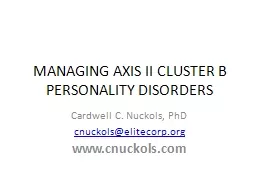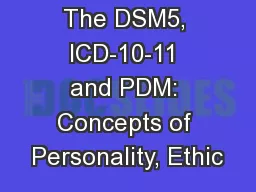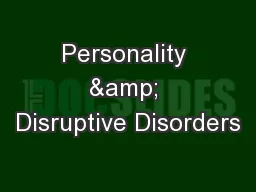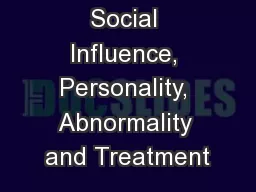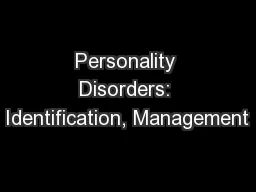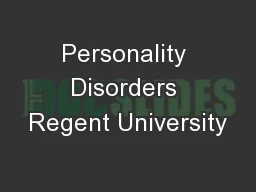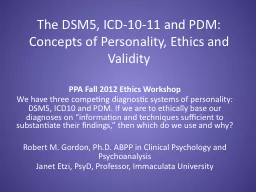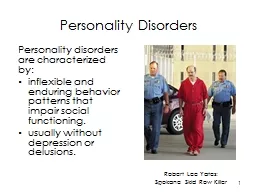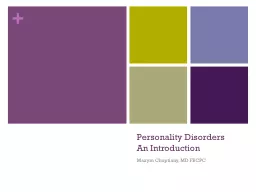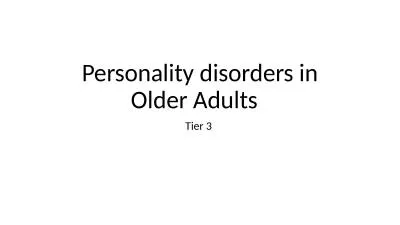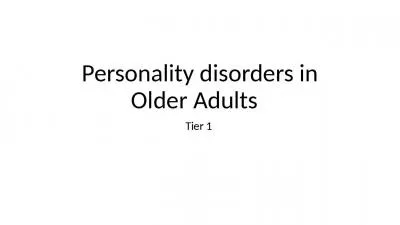PPT-MANAGING AXIS II CLUSTER B PERSONALITY DISORDERS
Author : min-jolicoeur | Published Date : 2016-10-26
Cardwell C Nuckols PhD cnuckolselitecorporg wwwcnuckolscom Treatment Considerations Relationship to Axis I Egosyntonic and Characterological Character traits more
Presentation Embed Code
Download Presentation
Download Presentation The PPT/PDF document "MANAGING AXIS II CLUSTER B PERSONALITY D..." is the property of its rightful owner. Permission is granted to download and print the materials on this website for personal, non-commercial use only, and to display it on your personal computer provided you do not modify the materials and that you retain all copyright notices contained in the materials. By downloading content from our website, you accept the terms of this agreement.
MANAGING AXIS II CLUSTER B PERSONALITY DISORDERS: Transcript
Download Rules Of Document
"MANAGING AXIS II CLUSTER B PERSONALITY DISORDERS"The content belongs to its owner. You may download and print it for personal use, without modification, and keep all copyright notices. By downloading, you agree to these terms.
Related Documents

